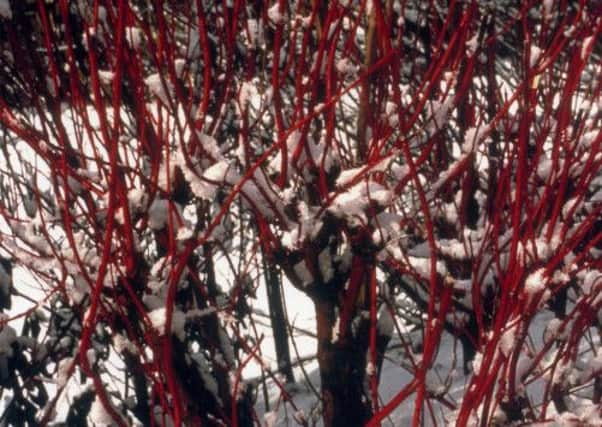Short, sharp shock


Cornus alba “Elegantissima” has lovely rich, ruby-red stems, while C a “Westonbirt” is even more stunning; together, they can transform a dull and dismal garden at this time of year. And C stolonifera “Flaviramea” does the same, only this time the stems are vivid yellow.
New stems produced each spring will soon form a thicket up to several feet tall. But if you want them to be vibrantly colourful year after year, you need to get out the secateurs.
Advertisement
Hide AdAdvertisement
Hide AdBecause it’s the young growth which is the most colourful; older stems grow taller and lose their intensity. Hence the need to cut them back – hard – to encourage another season of startling red or yellow shoots.
So prune the old stems to just an inch or two for the ground and then give them a good feed of general fertiliser and a mulch of well-rotted manure, old compost of leafmould.
Not only will you be preparing the ground for yet more winter colour but you’ll also be keeping the plants within bounds. Left alone, the leggy old stems will grow and grow.
Anyone who can’t live without the spring flowers of the likes of the dogwood can aim for the best of both worlds by hard pruning a third of the stems now and leaving the rest untouched to produce blooms. Next year, cut back these older stems.
Advertisement
Hide AdAdvertisement
Hide AdDogwoods aren’t too picky about the soil in which they grow, which is why they are often planted where many shrubs would struggle to flourish. But it will pay to give them a decent growing medium by adding plenty of well-rotted compost.
Dogwoods prefer full sun but they will still grow well in partial shade, although they may not be as colourful. Plenty of good light usually guarantees plenty of vibrant stems.
Newly-planted specimens should also be watered thoroughly in dry spells, especially during the first few years while they are putting down a decent root system.
Propagation is simple – plant cuttings in a sheltered spot outdoors in autumn. The majority should root by the following spring.